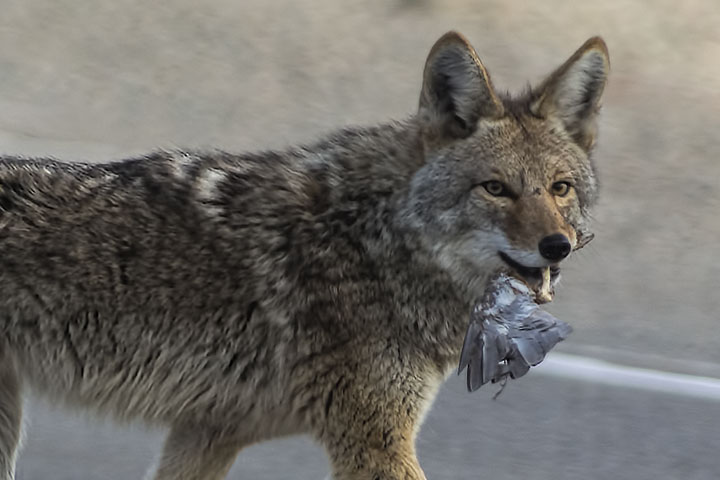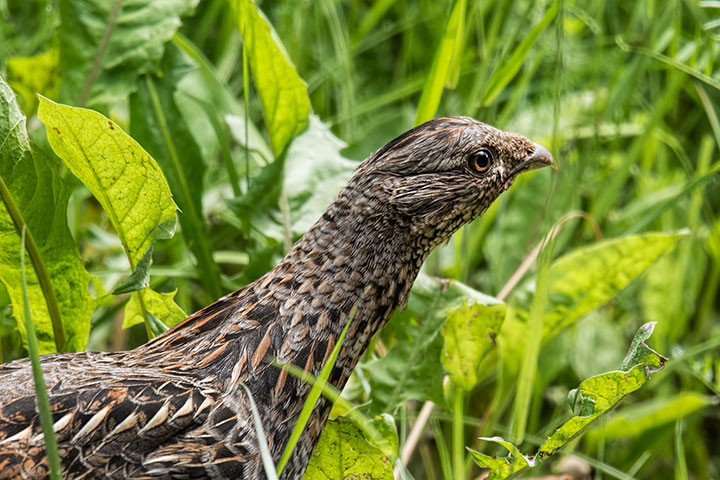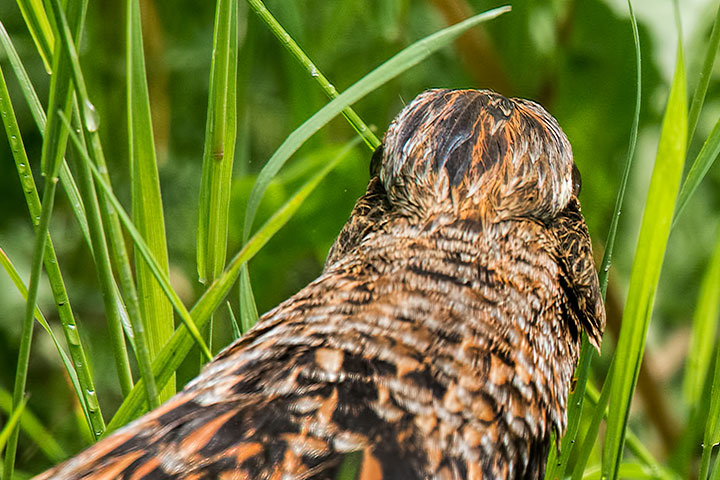The Ruffed Grouse is low on the food chain. A wide range of predators—hawks, owls, coyote, humans—find it tasty. Maybe only a tenth of these grouse makes it past its first year.
A recent posting, staring contests, explored the differences in vision of one prey (deer) and two predators (human, eagle). Even a casual observation of yesterday’s Ruffed Grouse revealed it to be prey.
This first picture was taken a year ago: a coyote finishing off what is most likely a Ruffed Grouse. Its tastiness clearly presents this bird with its biggest problem. Note the forward facing eyes of this predator. 
Yesterday’s grouse was foraging beside a back road where the vegetation is more suited to it than the deep forest. That the grouse is prey is immediately evident from the position of its eyes on the sides of its head. This enables the bird to detect a predator over a very wide angle of view.

Just how wide an angle it can monitor becomes clear with a view of the back of its head. The eyes are still visible. The grouse can probably see everything around it—front, sides and back—although its vision directly behind is probably limited to detecting motion.


Wow! The back-of-the-head photo is a perfect illustration of “wide angle” vision. For some reason that shot also reminds me of Donald Trump….